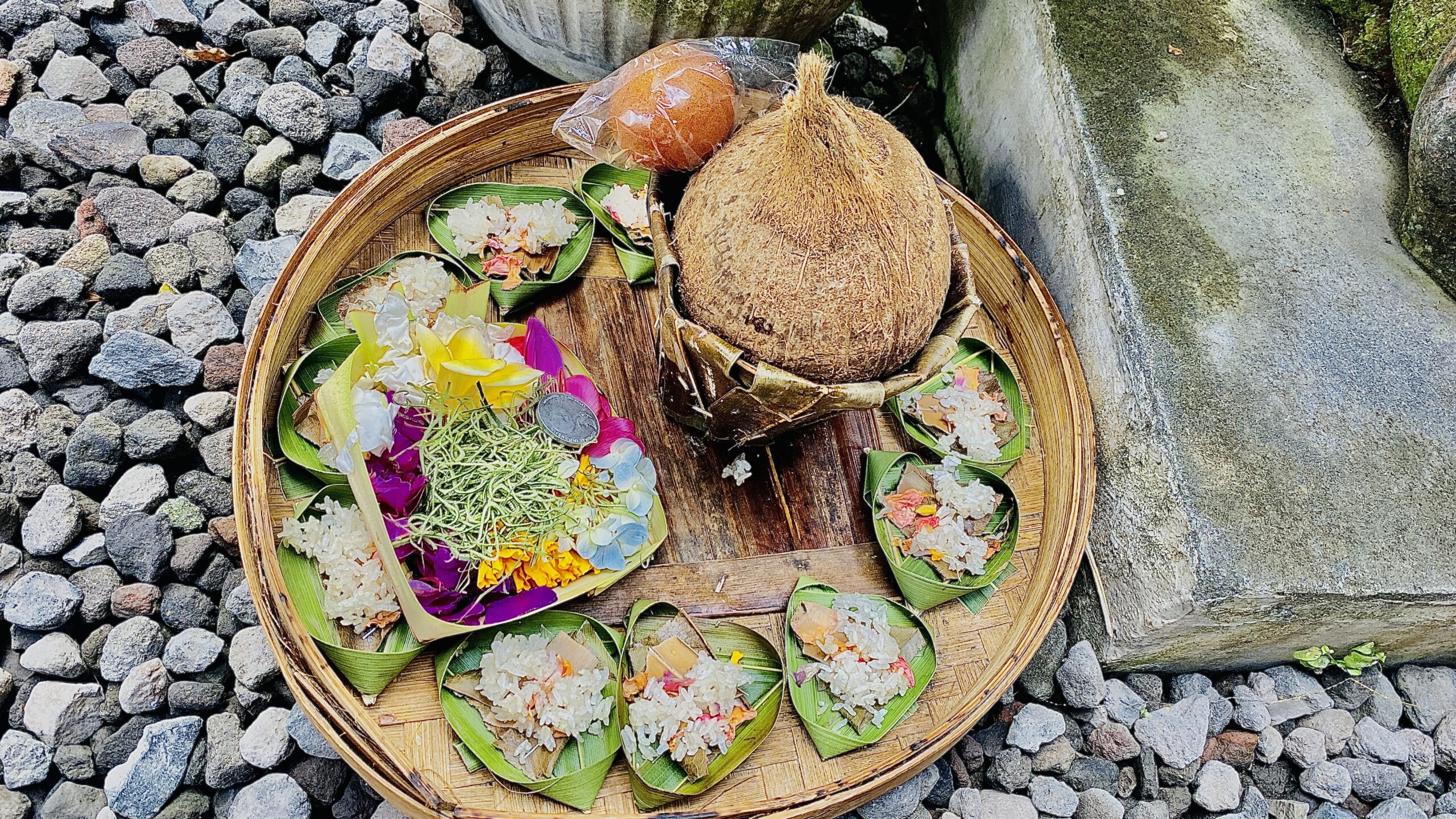Balinese believe that maintaining a harmonious relationship with nature, other people, the gods, and cultivating good character is important to have a balanced and healthy life today and after death.
To honour centuries-old traditions and express gratitude towards ancestors, tools, nature, and other beings, Balinese people have a system of rituals, festivals, and religious ceremonies that are part of everyone’s daily life.
What are some of the key Balinese ceremonies that you might witness when you visit Bali?
We’ve rounded up a few of the most beautiful and meaningful ceremonies that Balinese celebrate in families or with the entire island!
The Role Of Balinese Calendar
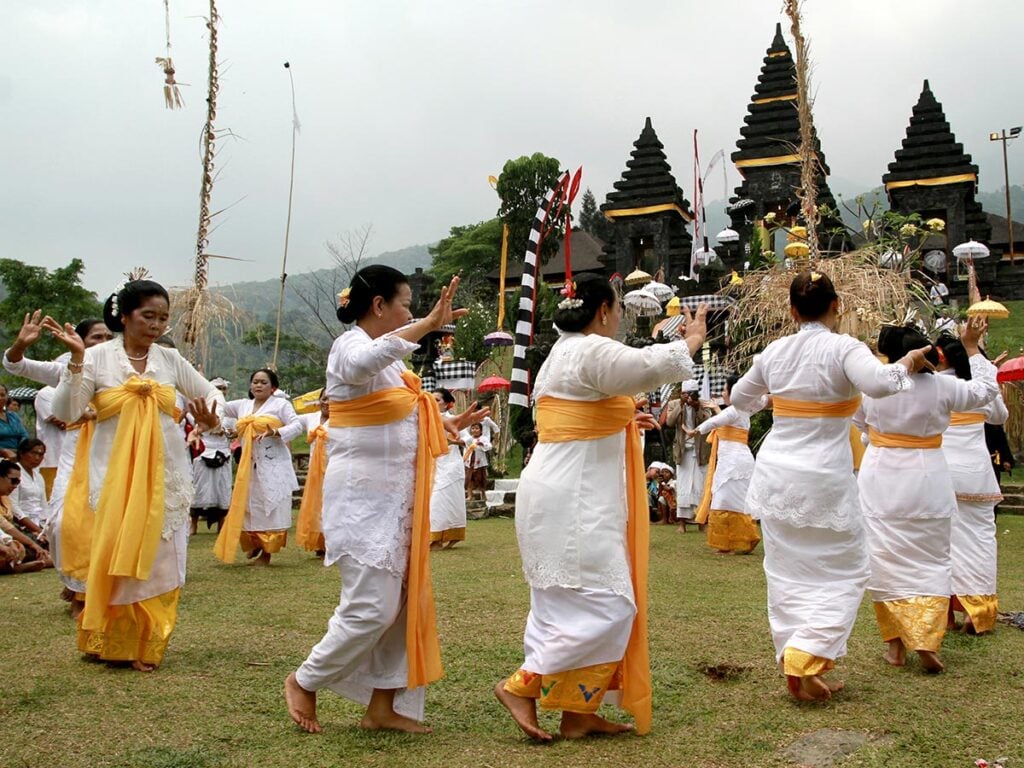
The Balinese calendar plays a crucial role in selecting auspicious days for ceremonies, holidays, weddings, funerals, and such. Pretty much any significant event or change in human life has a dedicated celebration in Bali.
Balinese Hinduism has a few calendars and, of course, in daily life, all people understand the regular Gregorian calendar.
Pawukon Balinese calendar – this calendar has a year of only 210 days (30 weeks of different lengths with no division into months). It governs most of the celebrations.
Saka Calendar is a lunar calendar with 12 months that has been used since the Saka Period in India. There are only 30 days between moon phases. This calendar runs 78-79 years behind our calendar, so when it is 2025 for us, it is 1946 in the Saka calendar.
Pelelintangan – special Balinese astrological calendar that has 35 days combined in weeks of 5 to 7 days. The day of birth will assign some characteristics to the baby.
If we are to divide all the Balinese ceremonies into two categories, there are certain family rites of passage that every Balinese should go through in life, and there is a group of public rituals and festivities that involve celebrating deities, nature, items, temples, etc.
Balinese Life Cycle Ceremonies: Rites Of Passage
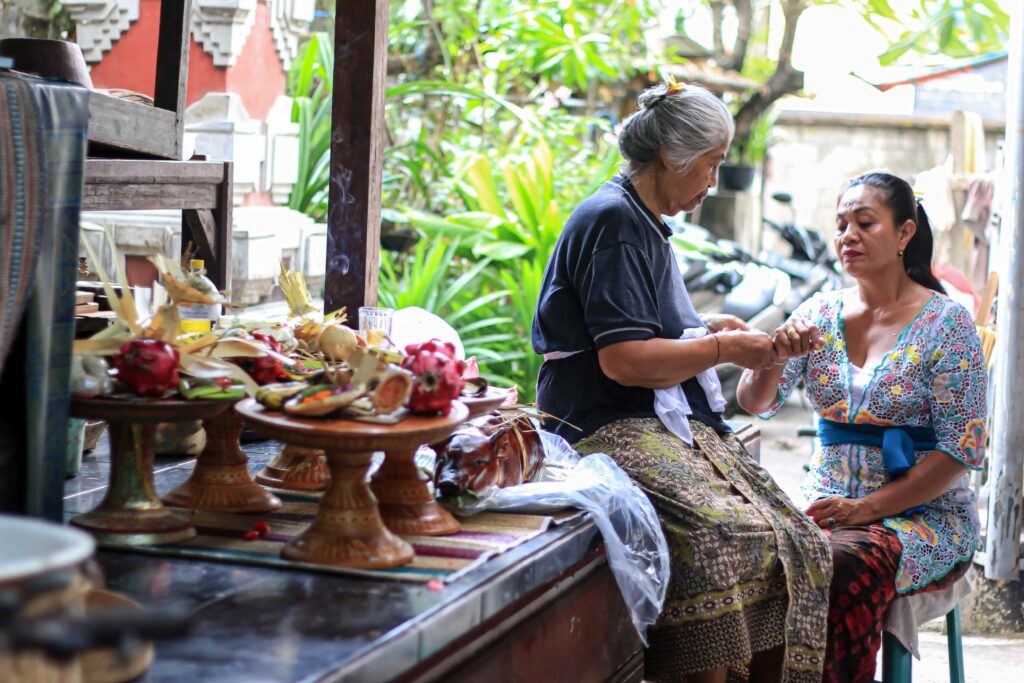
In total, there are 13 purifying rites of passage for every person in Balinese Hinduism to mark the path from divine, innocent and clean child to “human”-like an adult with ever-growing challenges and responsibilities.
Every single one of them focused on purification, strengthening spiritual energy and preparation for the next “stage” of life, as well as towards the 4 guardians of the person that is born at the same moment a baby is.
The 13 traditional Balinese rites are:
Pegedong-gedongan (6 months after conception).
Birth rituals.
Kepus pungsed ( umbilical cord falls off).
Ngelepas hawon (12 days after birth).
Tutug kambulan (42 days after birth).
Telubulan (105 days after birth/3 months).
Oton (210 days after birth/6 months).
Ngempugin (when permanent teeth appear).
Maketus (the last milk tooth falls out).
Munggah daa/teruna (puberty).
Mepandes (tooth filing).
Pawiwahan (marriage).
Pawintenan (purification for religious study).
Not every family celebrates all of them in the same manner. The scale will depend on the status and available finances.
Balinese Ceremonies Celebrated On The Island
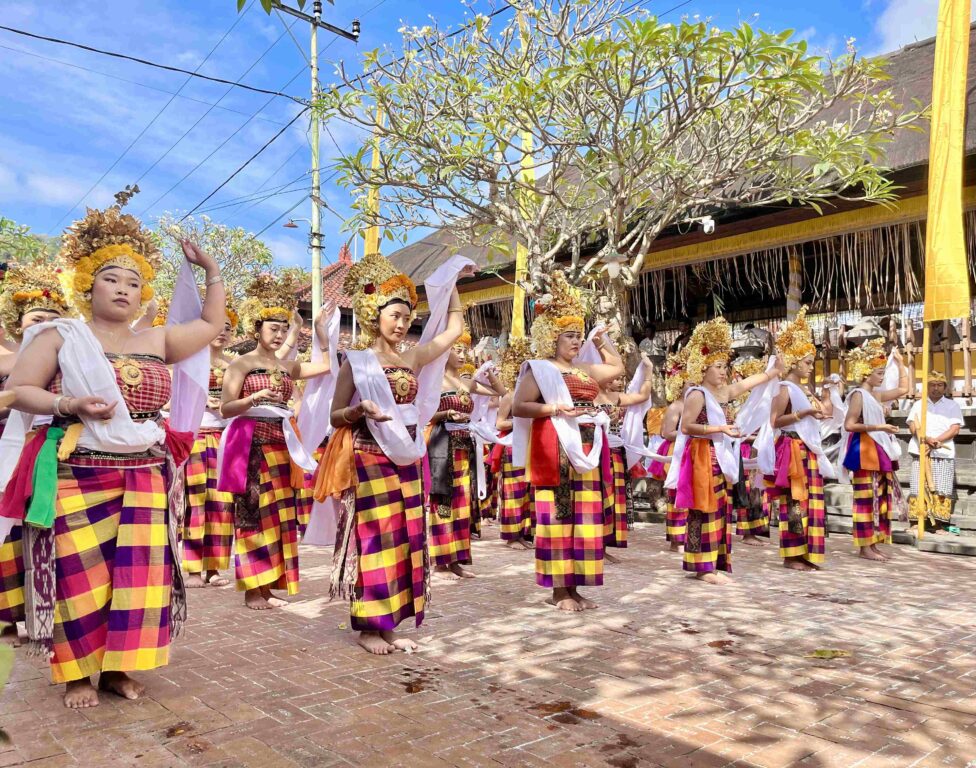
Kuningan, Galungan
Galungan and Kuningan are two ceremonies celebrating the victory of good (dharma) against evil forces (dharma).
Galungan happens on Wednesday of the 11th week of the Pawukon calendar.
It opens up a 10-day celebration and also invites ancestors to visit and stay with their families for that period. Families will entertain them and leave offerings. The streets will be lined with penjors – tall decorations that look like dragon tails.

Kuningan – Saturday of the 12th week of the Pawukon calendar, marks the end of this period. The two together symbolize the beginning of the Pawukon year.
A similar celebration of the dominance of good over evil spirits is a ceremony called Pagerwesi, but it is mostly celebrated in Northern Bali.
Next Galungan and Kuningan: 20-28th November 2025 and 17 to 27th June 2026.
Melukat

A self-purification ritual that uses holy water and usually is held in a temple. The water is believed to cleanse the body, mind, and spirit at the same time.
This is one of the ceremonies that even tourists can participate in (at certain temples). First, the priest will read mantras for you. Then, you should be bathed in coconut water, and finally, you can step into the holy water pool and walk under the fountain of holy water that will cleanse you from the head down.
Melaspas
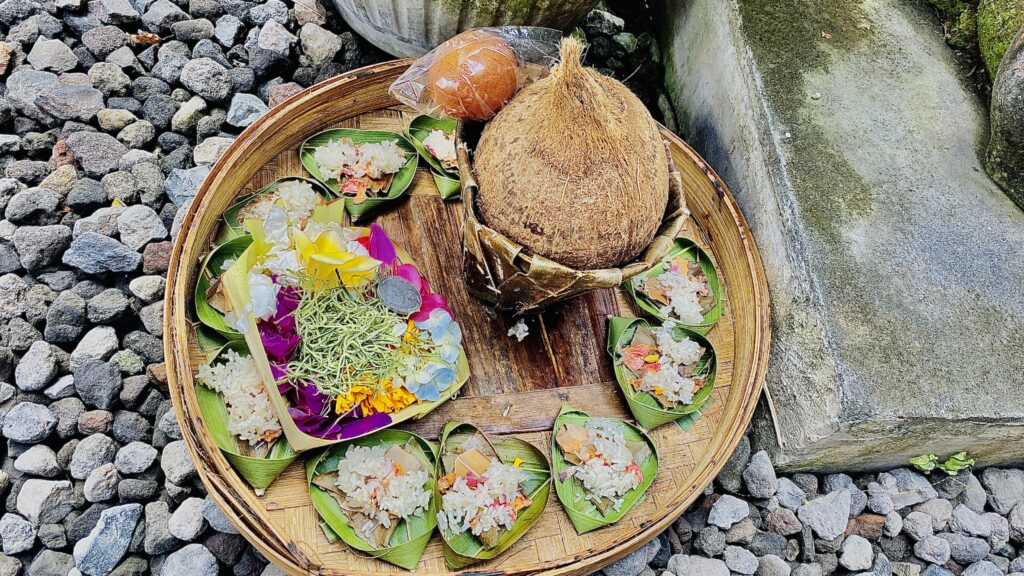
Melaspas is a purification ceremony for new houses and shrines in Bali culture. You should not move into a newly built home without setting up a date for its Melaspas.
The priest will use offerings, fruit and bird sacrifices around the yard, chant mantras, and invite homeowners to pray with him. He will leave small offerings on the walls for protection.
Siwa Ratri
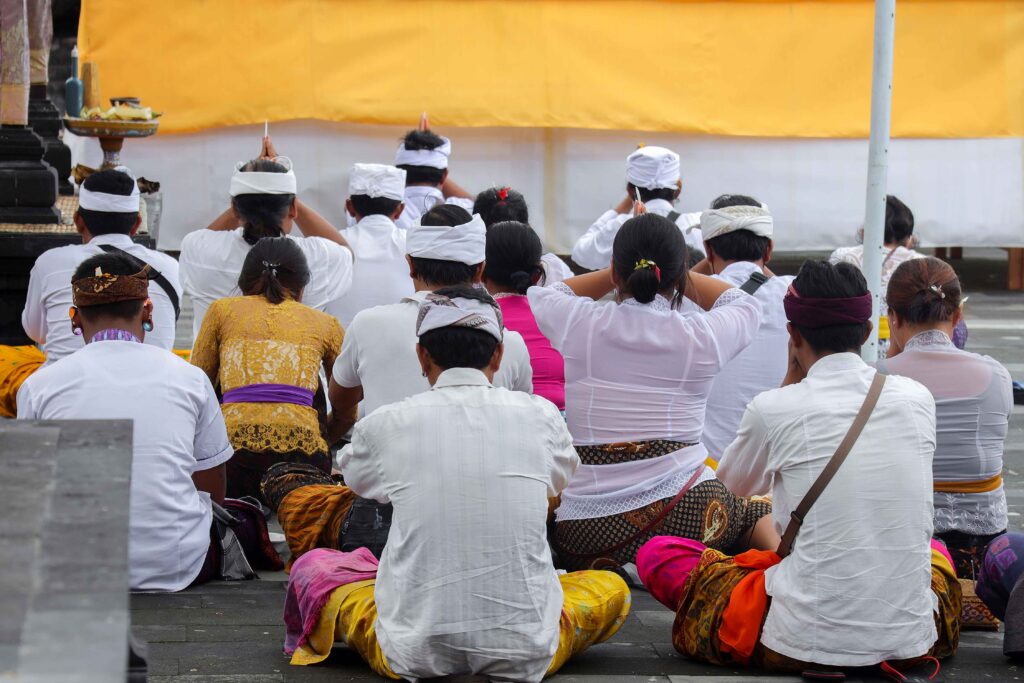
On a new moon of the 7th month of the Saka calendar comes a night of meditation dedicated to Shiva – the Hindu God of destruction.
Balinese people will fast for 24 hours, stay awake for 36 hours and refrain from talking for 12 hours. Prayers, meditation, and self-reflection are believed to bring you closer to God.
Next Siwa Ratri Day: 27th January 2025, 17th January 2026.
Saraswati Day
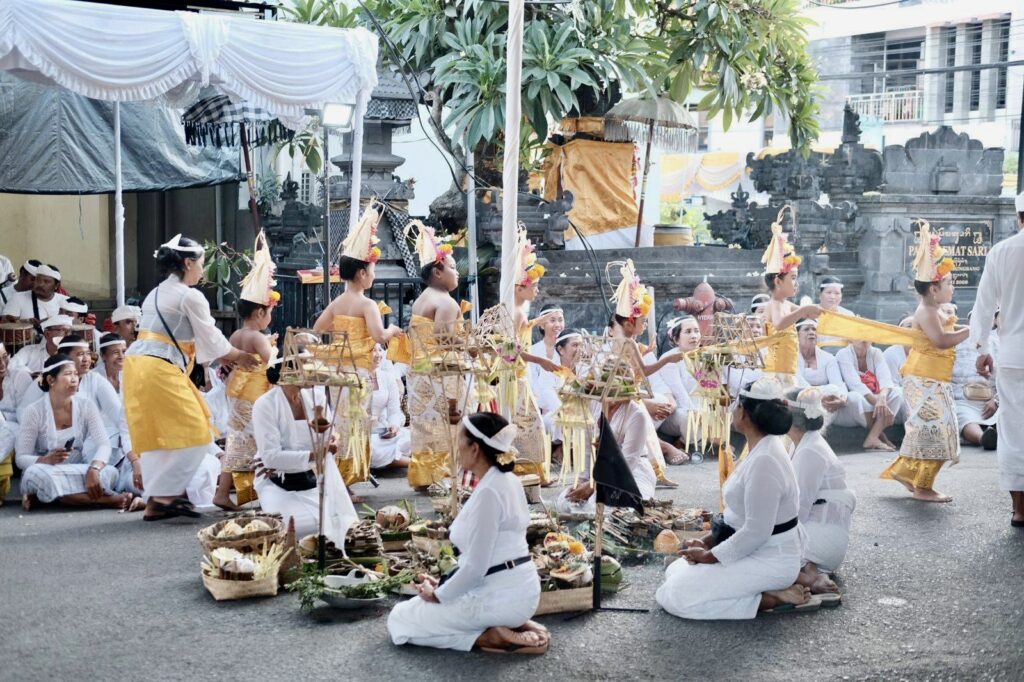
Saraswati is the Goddess of knowledge and creativity and on this day, people leave offerings at home, at work and at school to celebrate her.
During a few days of celebrations, people collect and clean books, and place offerings, in the evening, Balinese read religious books together at home or in a family temple. In prayers, people ask for Saraswati wisdom.
Next Saraswati Day: 2nd February 2025, 23rd January 2026.
Tumpek Landep
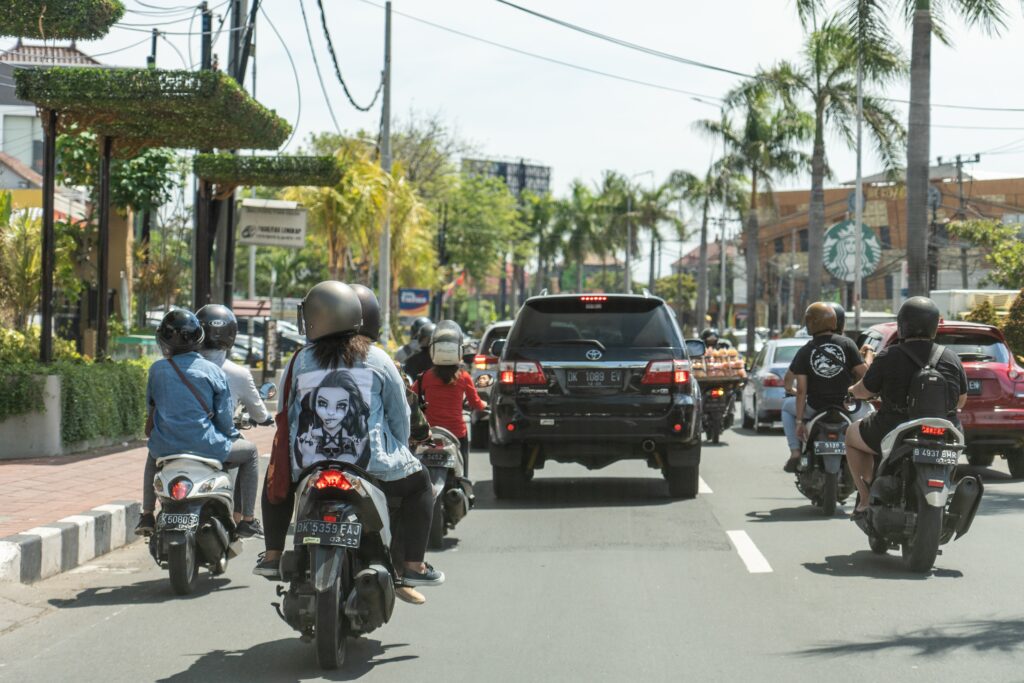
There is a cycle of Tumpek dates in the Balinese calendar, a total of 6 different important dates. The first one is Tumpek Landep – on a Saturday of the 2nd week of Pawukon.
This is a day to honour items made of metal and tools (including guns and computers) that help Balinese people in daily life. You may notice little offerings hanging on the mirrors of the bikes and cars on that day.
Tumpek Uduh
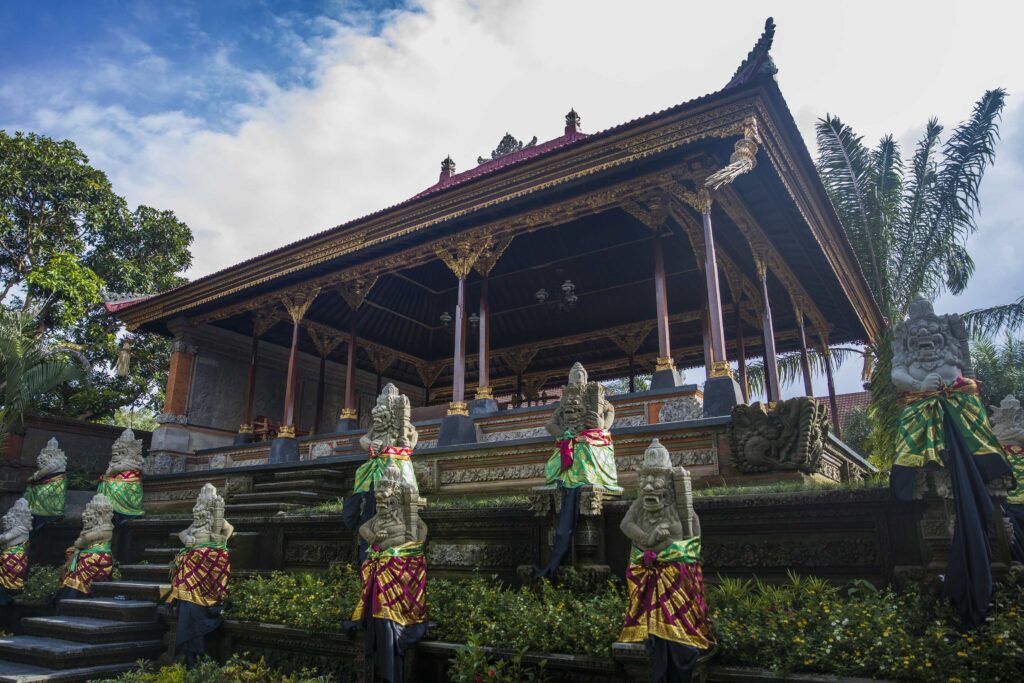
Five weeks after Tumpek Landep, Tumpek Uduh arrives – a celebration of trees, especially coconuts, that provide for Balinese people. The trees will receive offerings, and will be dressed in a “skirt” and asked for good and plentiful fruits.
A request to be blessed with good crops and many offerings for Sanghyang Sangkara – Lord of food.
Tumpek Kandang
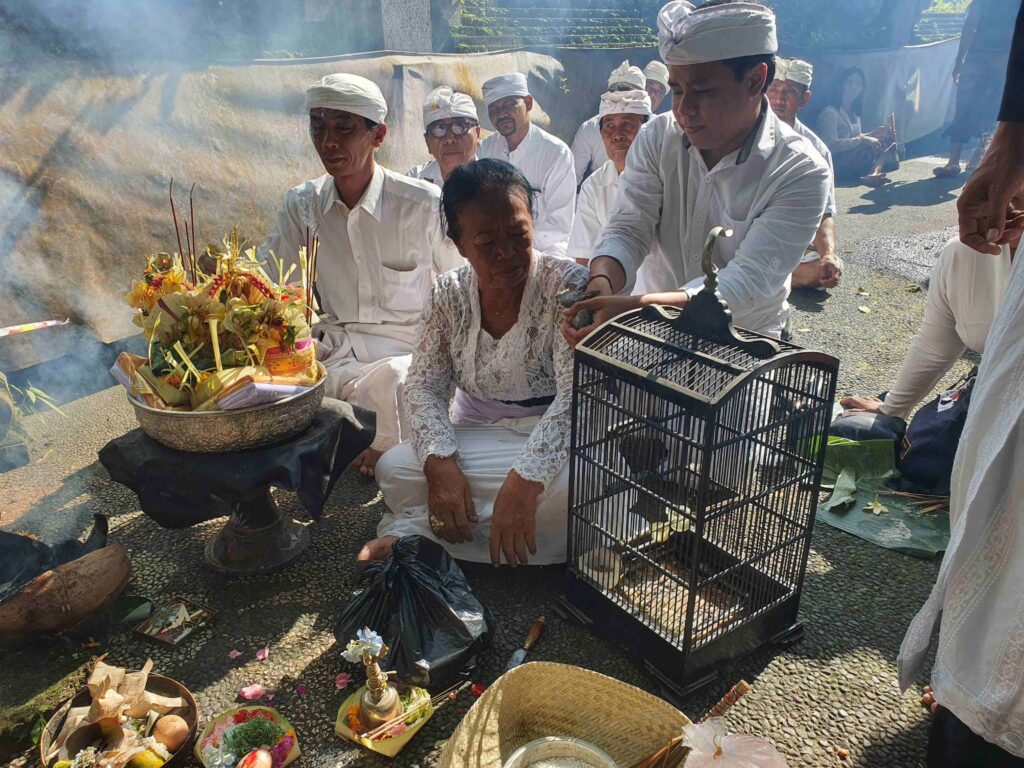
Another important date is a Saturday on the 22nd week of Pawukon, which is dedicated to Sang Hyang Rare-Angon – the Lord of animals and the ceremony for animals, Tumpek Kandang.
Household animals are highly valued by Balinese as they help people farm the land (cows and ducks), provide food and milk (cows, pigs, chickens), and protect the houses (dogs).
On this day, the animals are sprinkled with some holy water, cows will be washed, cows and pigs will have special food, and maybe some decorations too.
Nyepi
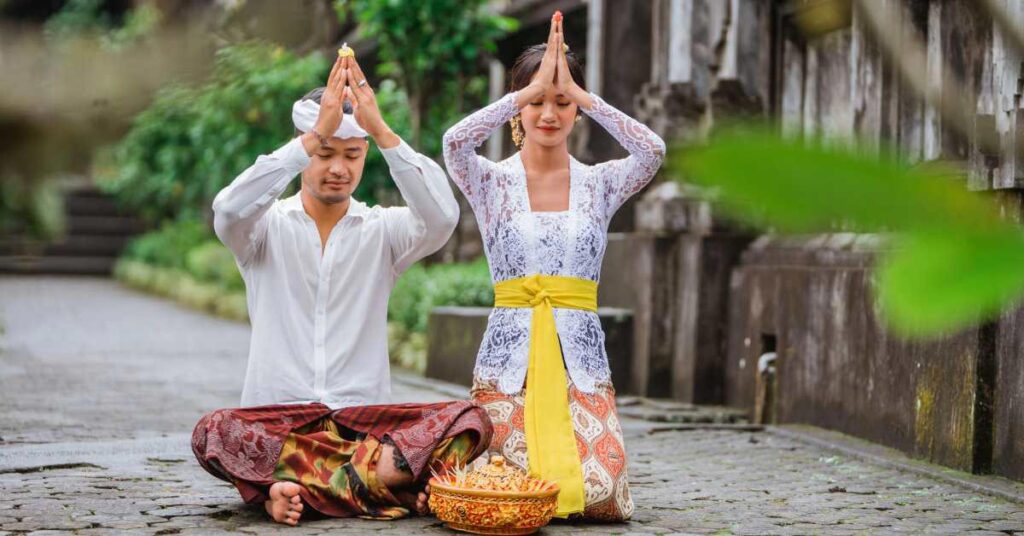
Nyepi is the Balinese New Year and it is celebrated on the first day of the 10th month (Kedasa) of the Balinese Saka calendar, which is usually somewhere in March. It is the first day of the Saka calendar.
On that day, people should fast, meditate or pray, and stay in complete silence. No one is allowed to leave the house, use lights or work, and everything is shut down, even the airport.
But the celebration starts well before! The day before Nyepi, in the morning, holy springs and beaches will see a long procession called Melasti (better known to many visitors as the Ogoh-Ogoh parade after the giant demonic puppets used during the parade). Such processions carry village gods and sacred objects to be purified in holy water and returned back to the village temple.
In the evening, a colourful parade starts! Every village has been crafting one huge figure of a demon made of paper mache and other materials. Those demons and monsters represent evil spirits that want to take over the island.
The procession takes them down the streets, trying to confuse them by rotating the platform they are mounted on, playing loud music, dancing, and chanting. It is believed that the next day, the Silent Day of Nyepi, the demons won’t be able to find a soul outside, leading them to believe that Bali has been abandoned and then they will leave the island for another year.
Ngaben
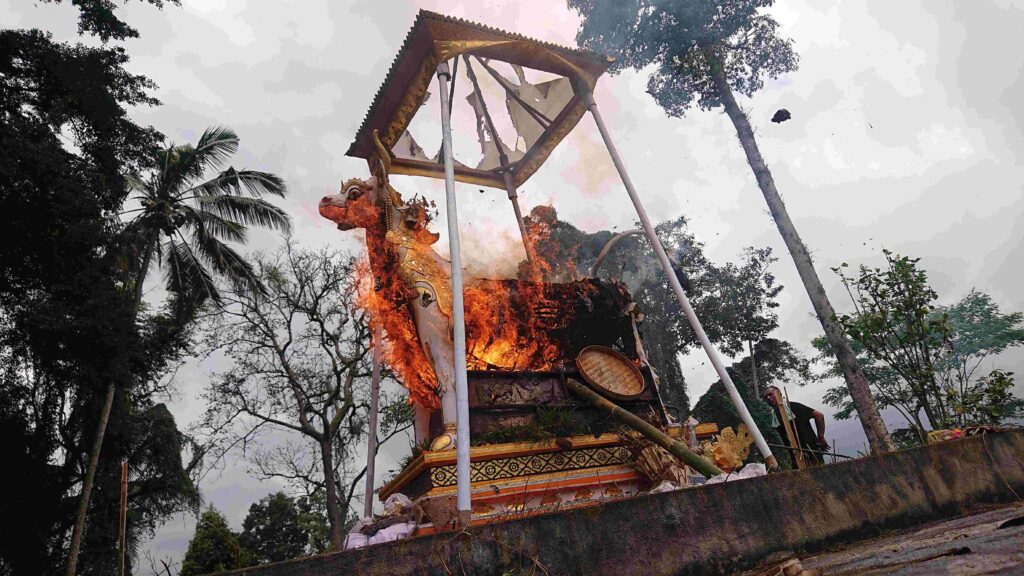
The Ngaben ceremony marks the passage into the afterlife and is a traditional ceremony for funeral and cremation when the deceased is washed, offerings are made, and the body is placed in an animal-shaped coffin and carried to the temple grounds.
There, the body will be cremated, and the remaining ashes and bones will be collected by the family. Later on, they will release them into the river or sea.
Full Moon Ceremonies
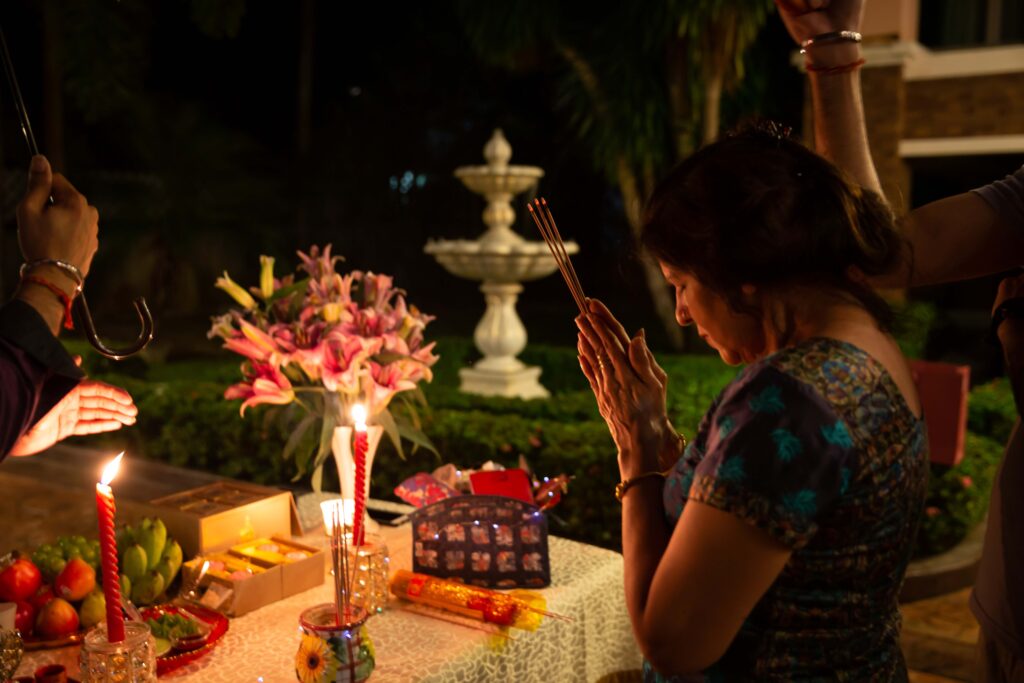
Months in the Saka calendar begin and end with moon phases. Once a month, on Purnama Day, the Balinese celebrate the full moon with offerings, temple ceremonies, prayers, holy water purification rituals, and more.
The moon God Chandra appears on this day to shine the light and blessings onto people. By celebrating the full moon, the Balinese believe in celebrating the fullness of human life.
Every 10th full moon ceremony is a big one: in all the temples all over the island Balinese people ask Gods and ancestors for blessings.
Odalan – Temple Festival
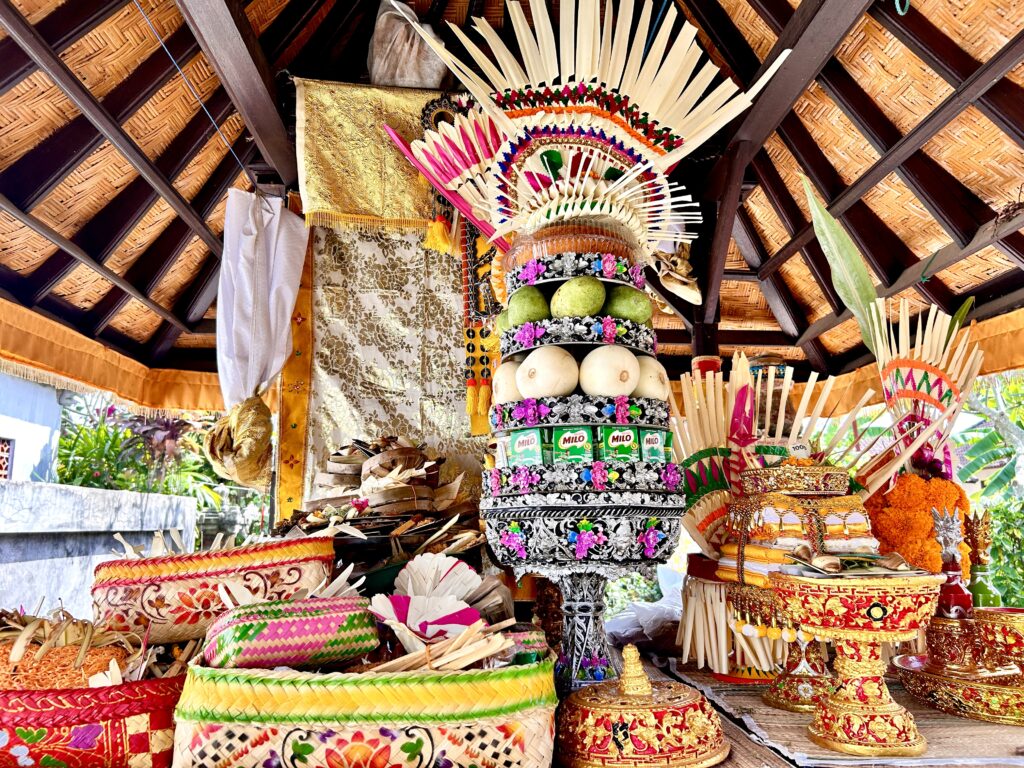
Odalan is a 3-day temple anniversary, the most important temple ceremony for Balinese. It can have 2 dates:
-
according to the Pawukon calendar, it can be every 210 days
-
but according to the Saka calendar, it can be every lunar year.
It is beautiful to watch: women and men, all dressed in special ceremonial outfits, young and older women carry offerings and fruits on their heads, and you can hear gamelan traditional music, and feel the incense aroma. Families come and pray at the temple.
And with more than 20,000 temples in Bali, there is always one that has a celebration!
FAQs
What Are The Ceremonies In Bali?
Balinese ceremonies are a form of celebration of gods and ancestors in Bali culture. For ex., full moon ceremonies, birth ceremonies, Galungan and Kuningan, Melasti, Nyepi, and so on.
What Are The Daily Rituals Of Balinese People?
Balinese people make daily traditional offerings – canang – three times a day, in front of their houses and businesses, and in family temples. Each offering should be accompanied by incense.
What Is The Biggest Ceremony In Bali?
Melasti – the biggest purification ceremony before the Hindu New Year, Silent Day of Nyepi, is the biggest ceremony in Bali where all the Balinese participate in processions to holy springs and ocean.
How Long Does A Balinese Ceremony Last?
Depending on the ceremony it can last from one day to 10 days like Galungan and Kuningan celebrations. Most big rituals and ceremonies include a lengthy prep work to make offerings and decorations.
Final Thoughts On Bali Ceremonies
On a daily basis, Balinese participate in rituals, celebrations, and century-old ceremonies that carry on the history, heritage and deep religious meaning of their ancestors and descendants.
To witness the whole island transform for major ceremonies it is a true dream of every traveller. If possible, try to connect with this rich culture or at least take a peek at some majestic processions and family temples lining the streets.

